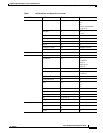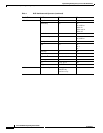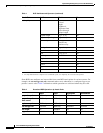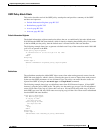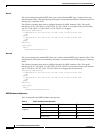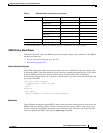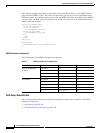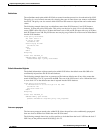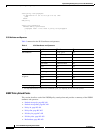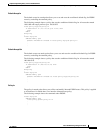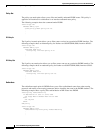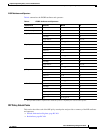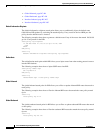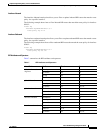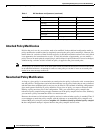
Implementing Routing Policy on Cisco IOS XR Software
Information About Implementing Routing Policy on Cisco IOS XR Software
RC-399
Cisco IOS XR Routing Configuration Guide
OL-14356-01
Redistribute
The redistribute attach point within IS-IS allows routes from other protocols to be readvertised by IS-IS.
The policy is a set of control structures for selecting the types of routes that a user wants to redistribute
into IS-IS. The policy can also control which IS-IS level the routes are injected into and at what metric
values.
The following example shows how to redistribute routes from IS-IS instance 1 into IS-IS instance
instance_10 using the policy ISIS-redist. This policy sets the level to level-1-2 for all redistributed
routes. OSPF routes with a tag of 10 have their metric set to 100, and IS-IS routes with a tag of 20 have
their IS-IS metric set to 200. Any IS-IS routes not carrying a tag of either 10 or 20 are not be redistributed
into the IS-IS database.
route-policy ISIS-redist
set level level-1-2
if tag eq 10 then
set metric 100
elseif tag eq 20 then
set metric 200
else
drop
endif
end-policy
router isis instance_10
address-family ipv4 unicast
redistribute ospf 1 policy ISIS-redist
.
.
.
Default-Information Originate
The default-information originate attach point within IS-IS allows the default route 0.0.0.0/0 to be
conditionally injected into the IS-IS route database.
The following example shows how to generate an IPv4 unicast default route if any of the routes that
match 10.0.0.0/8 ge 8 le 25 is present in the RIB. The cost of the IS-IS route is set to 100 and the level
is set to level-1-2 on the default route that is injected into the IS-IS database.
route-policy isis-originate
if rib-has-route in (10.0.0.0/8 ge 8 le 25) then
set metric 100
set level level-1-2
endif
end-policy
router isis instance_10
address-family ipv4 unicast
default-information originate policy isis_originate
.
.
.
Inter-area-propagate
The inter-area-propagate attach point within IS-IS allows the prefixes to be conditionally propagated
from one level to another level within the same IS-IS instance.
The following example shows how to allow prefixes to be leaked from the level 1 LSP into the level 2
LSP if any of the prefixes match 10.0.0.0/8 ge 8 le 25.



